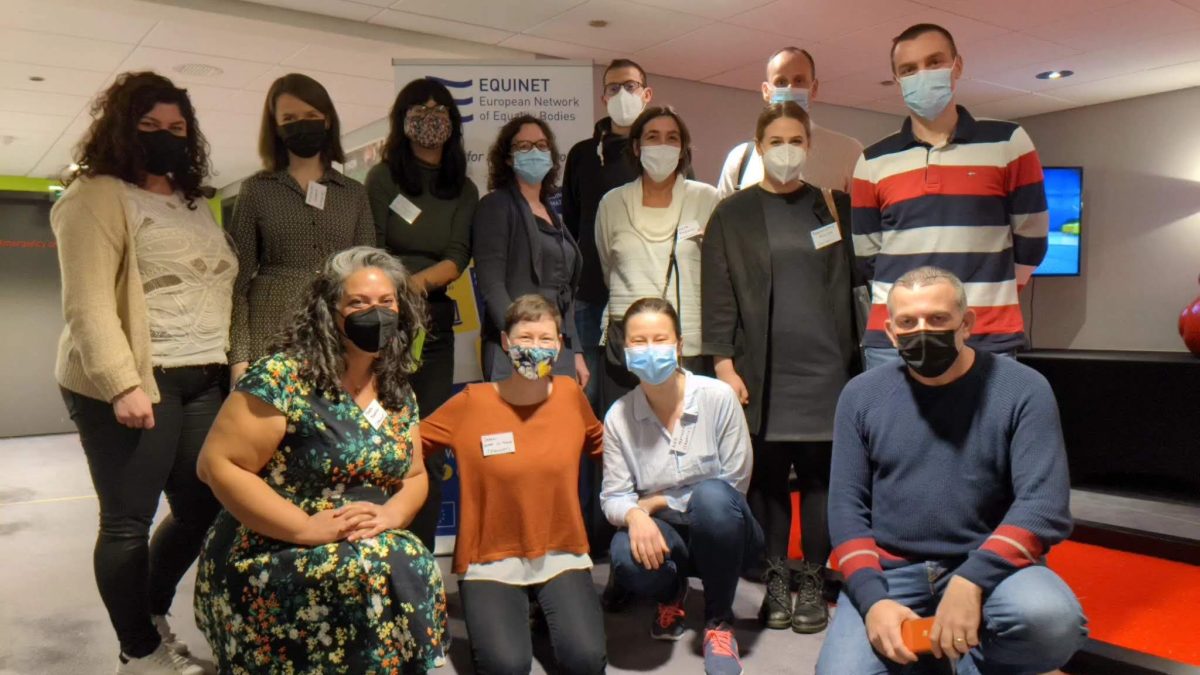The path to persuasion: “Be credible. Be clear. Be captivating”

Jordan Vu-Abouzeid, Communications Officer, Commonwealth Forum of National Human Rights Institutions (CFNHRI) at the Equality and Human Rights Commission (EHRC)
On December 1-2, 2021, Equinet hosted a training to help communication experts from equality bodies countering hate speech on- as well as offline. The training approached persuasive writing techniques, in particular writing and effectively communicating messages.
Persuading people is hard. Persuading internet trolls is harder. Persuading me to participate in mock debates is nearly impossible, unless there are Belgian waffles and fries available on completion.
At the beginning of December, I was lucky enough to attend an Equinet (European Network of Equality Bodies) training session in Brussels on persuasion and hate speech. After a couple of weeks of doomscrolling for updates to COVID restrictions and of course, a pre-departure test, I set off to the capital of Europe to meet with communication officers from peer organisations. The objective of the training was to learn how we as equality bodies can not only convince our audience to agree with us, but also how we can influence people to take action towards creating fairer societies.
Be credible. Be clear. Be captivating
Our trainers described the ‘path to persuasion’ rather simply: ‘Be credible. Be clear. Be captivating.’ In practice, this means asking questions about our audience to understand their perception of us before we attempt to persuade them (and subsequently knocking their socks off).
Does our audience respect us? Do they think we have information that is useful to them? Do they think we will reward them for their actions? We talked about how the success of our communications depends more on how we are perceived overall than what we are saying with any particular campaign.
We learnt how to ‘convince like Cicero’ and took part in a number of exercises, like mock debates, to test our new skills. Some of us were tasked with persuading fictional Finnish tour guides that gender-neutral toilets will improve their business. It sounds niche but the techniques we used are widely applicable. Overall, it was a really useful session.
Promote a message of hope
Following on from persuasion, we learnt about dealing with hate speech. Unfortunately, our communication team regularly sees hateful remarks on social media and via our correspondence unit. It was comforting to note that many participants had similar questions about when to engage with people, how to differentiate between a genuine critic and a straight-up troll, and how to deescalate hateful rhetoric to negotiate common ground.
The key takeaway from this session was that there is no way to close out hate speech entirely. However, we can choose when and how to respond, and when we do, we must promote a message of hope.
Ending on a fairly cheesy note there so I’ll just run with that and say how rewarding it was to connect with communication colleagues from other equality bodies. Many of us face the same day-to-day challenges in our roles and it was a fantastic opportunity to share knowledge within the network, while also learning from experienced trainers. Although we were masked up for the duration of the training, I think we all left with big smiles and heaps of new strategies to use in our work.
To learn more about the training and its outcomes, please see the Equinet Activities section.
The views on this blog are always the authors’ and they do not necessarily reflect Equinet’s position (although we had a really enjoyable time at the training too!)

